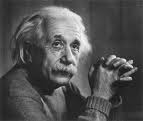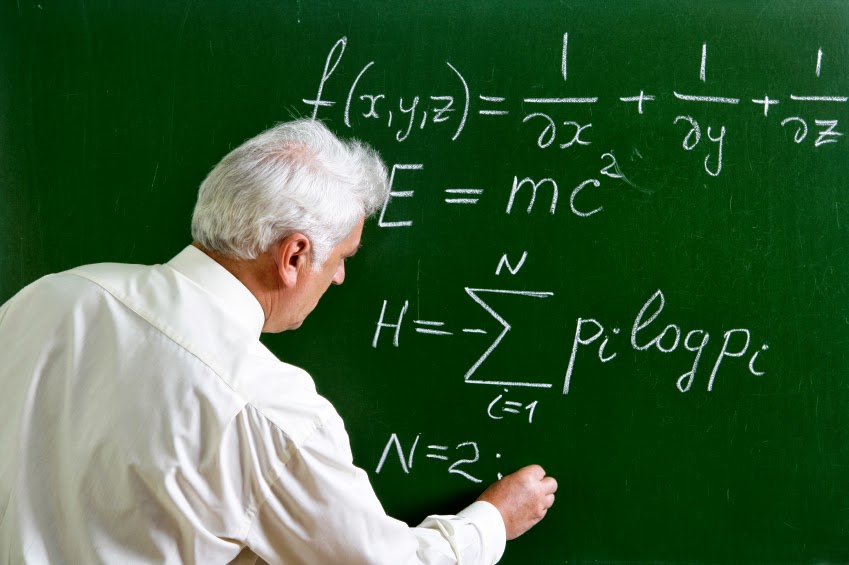 Albert Einstein (March 14, 1879 ? April 18, 1955) was a German-born American theoretical physicist widely regarded as the most important scientist of the 20th century. He was the author of the general theory of relativity and made important contributions to the special theory of relativity, quantum mechanics, statistical mechanics, and cosmology. He was awarded the 1921 Nobel Prize for Physics for his explanation of the photoelectric effect in 1905 (his "miracle year") and "for his services to Theoretical Physics".
Albert Einstein (March 14, 1879 ? April 18, 1955) was a German-born American theoretical physicist widely regarded as the most important scientist of the 20th century. He was the author of the general theory of relativity and made important contributions to the special theory of relativity, quantum mechanics, statistical mechanics, and cosmology. He was awarded the 1921 Nobel Prize for Physics for his explanation of the photoelectric effect in 1905 (his "miracle year") and "for his services to Theoretical Physics".After British solar eclipse expeditions in 1919 confirmed that light rays from distant stars were deflected by the gravity of the Sun in the exact amount he had predicted in his theory of relativity, Einstein became world-famous, an unusual achievement for a scientist. In his later years, his fame perhaps exceeded that of any other scientist in history. In popular culture, his name has become synonymous with great intelligence and genius.
Youth and college
Einstein was born on March 14, 1879 at Ulm in Baden-Württemberg, German Empire, about 100 km east of Stuttgart. His parents were Hermann Einstein, a featherbed salesman who later ran an electrochemical works, and Pauline, née Koch. They were married in Stuttgart-Bad Cannstatt. The family was Jewish (non-observant); Albert attended a Catholic elementary school and, at the insistence of his mother, was given violin lessons. Though he initially disliked the lessons, and eventually discontinued them, he would later take great solace in Mozart's violin sonatas.
When Einstein was five, his father showed him a pocket compass, and Einstein realized that something in "empty" space acted upon the needle; he would later describe the experience as one of the most revelatory of his life. Though he built models and mechanical devices for fun and showed great mathematical faculty early on, he was considered a slow learner, possibly due to dyslexia, simple shyness, or the significantly rare and unusual structure of his brain (examined after his death).
1 He later credited his development of the theory of relativity to this slowness, saying that by pondering space and time later than most children, he was able to apply a more developed intellect. Some researchers have speculated that Einstein may have exhibited some traits of mild forms of autism, although they concede that a reliable posthumous diagnosis is impossible.2
In 1889, a medical student named Max Talmud (later: Talmey) introduced Einstein to key science and philosophy texts, including Kant's Critique of Pure Reason. Two of his uncles would further foster his intellectual interests during his late childhood and early adolescence by recommending and providing books on science, mathematics and philosophy.
Einstein attended the Luitpold Gymnasium, where he received a relatively progressive education. He began to learn mathematics around age twelve; in 1891, he taught himself Euclidean plane geometry from a school booklet and began to study calculus. There is a recurring rumor that Einstein failed mathematics later in his education, but this is untrue; a change in the way grades were assigned caused confusion years later. However, while at the Gymnasium, he clashed with authority and resented the school regimen, believing that the spirit of learning and creative thought were lost in such endeavors as strict memorization.
In 1894, following the failure of Hermann Einstein's electrochemical business, the Einsteins moved from Munich to Pavia, a city in Italy near Milan. Einstein's first scientific work, called "The Investigation of the State of Aether in Magnetic Fields", was written contemporaneously. Albert remained behind in Munich lodgings to finish school, completing only one term before leaving the gymnasium in the spring of 1895 to rejoin his family in Pavia.
He quit a year and a half prior to final examinations without telling his parents, convincing the school to let him go with a medical note from a friendly doctor, but this meant that he had no secondary-school certificate.3
Although he excelled in the mathematics and science portion of the Eidgenössische Technische Hochschule (ETH, Swiss Federal Institute of Technology, in Zürich) entrance exam the following year, his failure of the liberal arts portion was a setback; his family sent him to Aarau, Switzerland to finish secondary school. There, he studied the seldom-taught Maxwell's electromagnetic theory and received his diploma in September 1896. During this time, he lodged with Professor Jost Winteler's family and became enamoured with Marie, their daughter and his first sweetheart.
Einstein's sister, Maja, who was perhaps his closest confidant, was to later marry their son, Paul, and his friend, Michele Besso, married their other daughter, Anna.4 Einstein subsequently enrolled at the Eidgenössische Technische Hochschule in October and moved to Zürich, while Marie moved to Olsberg, Switzerland for a teaching post. The same year, he renounced his Württemberg citizenship and became stateless.
In the spring of 1896, the Serbian Mileva Mariæ started initially as a medical student at the University of Zurich, but after a term switched to the same section as Einstein as the only woman that year to study for the same diploma. Einstein's relationship with Mariæ developed into romance over the next few years.
In 1900, Einstein was granted a teaching diploma by the Eidgenössische Technische Hochschule (ETH Zurich). Einstein then wrote his first published paper, on the capillary forces of a drinking straw, titled "Folgerungen aus den Capillaritätserscheinungen", which translated is "Consequences of the observations of capillarity phenomena" (found in "Annalen der Physik" volume 4, page 513).
In it, he tried to unify the laws of physics, an attempt he would continually make throughout his life. Through his friend Michelle Besso, an engineer, Einstein was presented with the works of Ernst Mach, and would later consider him "the best sounding board in Europe" for physical ideas. During this time, Einstein discussed his scientific interests with a group of close friends, including Besso and Mariæ.
The men referred to themselves as the "Olympia Academy". Einstein and Mariæ had a daughter out of wedlock, Lieserl Einstein, born in January 1902. Her fate is unknown; some believe she died in infancy, while others believe she was given out for adoption.
Work and doctorate
Upon graduation, Einstein could not find a teaching post, mostly because his brashness as a young man had apparently irritated most of his professors. The father of a classmate helped him obtain employment as a technical assistant examiner at the Swiss Patent Office5 in 1902.
There, Einstein judged the worth of inventors' patent applications for devices that required a knowledge of physics to understand ? in particular he was chiefly charged to evaluate patents relating to electromagnetic devices.6 He also learned how to discern the essence of applications despite sometimes poor descriptions, and was taught by the director how "to express [him]self correctly". He occasionally rectified their design errors while evaluating the practicality of their work.
Einstein married Mileva Mariæ on January 6, 1903. Einstein's marriage to Mariæ, who was a mathematician, was both a personal and intellectual partnership: Einstein referred to Mileva as "a creature who is my equal and who is as strong and independent as I am". Ronald W. Clark, a biographer of Einstein, claimed that Einstein depended on the distance that existed in his and Mileva's marriage in order to have the solitude necessary to accomplish his work; he required intellectual isolation.
Abram Joffe, a Soviet physicist who knew Einstein, in an obituary of Einstein, wrote, "The author of [the papers of 1905] was ... a bureaucrat at the Patent Office in Bern, Einstein-Mariæ" and this has recently been taken as evidence of a collaborative relationship. However, according to Alberto A. Martínez of the Center for Einstein Studies at Boston University, Joffe only ascribed authorship to Einstein, as he believed that it was a Swiss custom at the time to append the spouse's last name to the husband's name.7 Whatever the truth, the extent of her influence on Einstein's work is a highly controversial and debated question.
In 1903, Einstein's position at the Swiss Patent Office had been made permanent, though he was passed over for promotion until he had "fully mastered machine technology".8 He obtained his doctorate after submitting his thesis "A new determination of molecular dimensions" ("Eine neue Bestimmung der Moleküldimensionen") in 1905.
That same year, he wrote four articles that participated in the foundation of modern physics, without much scientific literature to which he could refer or many scientific colleagues with whom he could discuss the theories. Most physicists agree that three of those papers (on Brownian motion, the photoelectric effect, and special relativity) deserved Nobel Prizes. Only the paper on the photoelectric effect would be mentioned by the Nobel committee in the award. This is ironic, not only because Einstein is far better-known for relativity, but also because the photoelectric effect is a quantum phenomenon, and Einstein became somewhat disenchanted with the path quantum theory would take.

